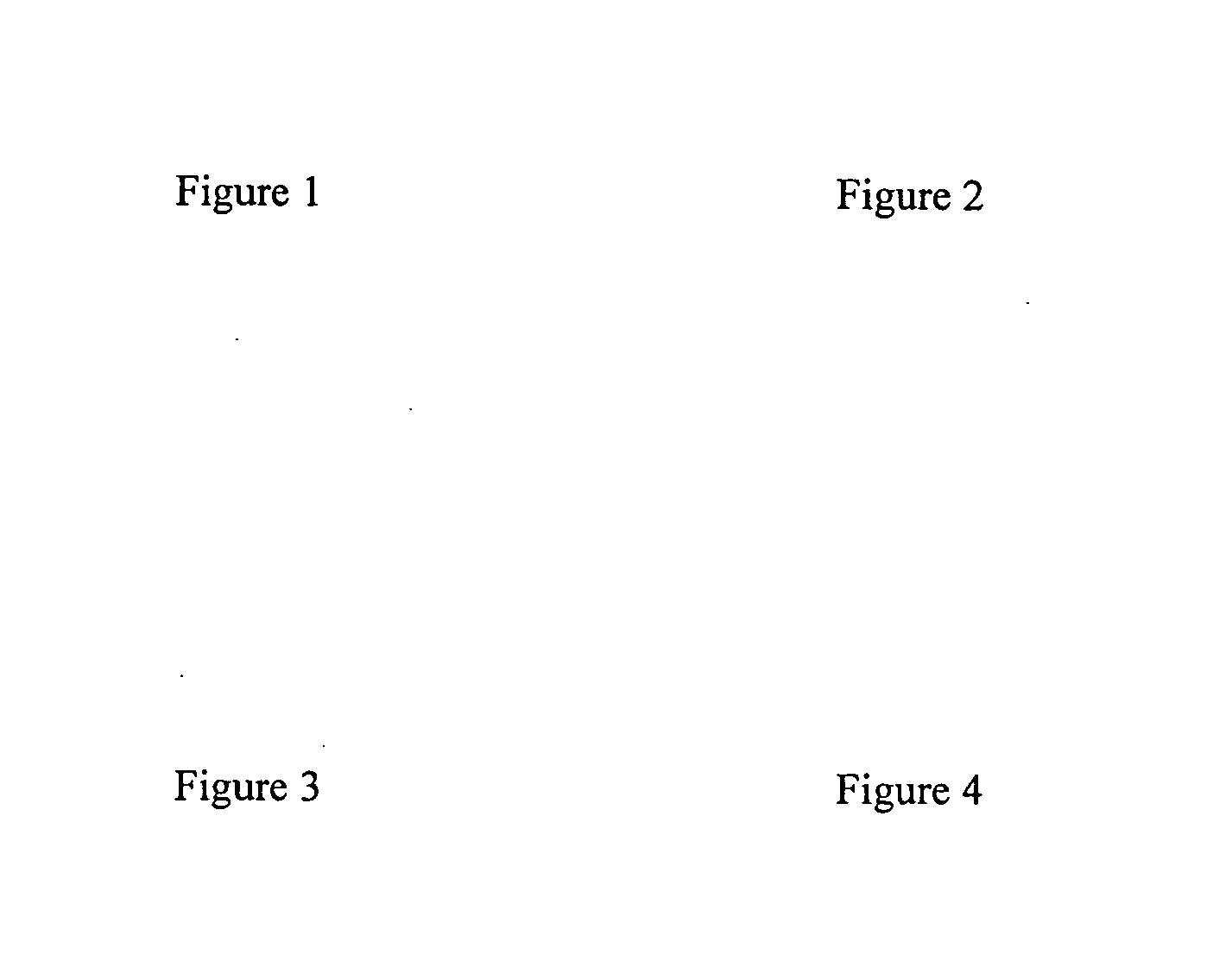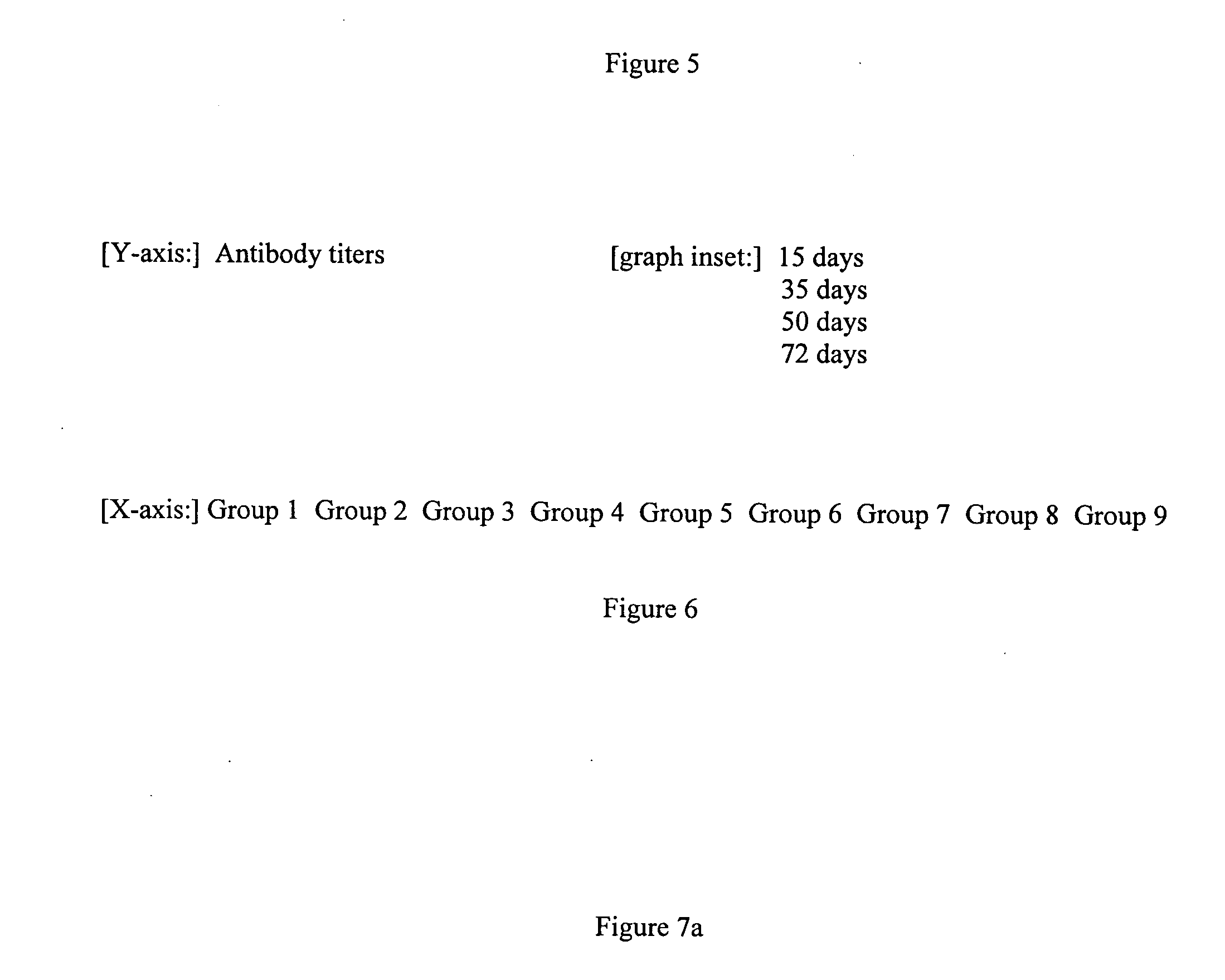T cell immune response inhibitor
- Summary
- Abstract
- Description
- Claims
- Application Information
AI Technical Summary
Benefits of technology
Problems solved by technology
Method used
Image
Examples
embodiment 1
Bovine Foot and Mouth Disease (FMDV) VP1 Protein Antigen Preparation
[0044] One. Bovine Foot and Mouth Disease VP1 cDNA Clones
[0045] Stomatic pathology tissue from cows infected with bovine foot and mouth disease virus and an RNA extraction reagent kit (purchased from the Shanghai Bioengineering Company) were used. In accordance with test kit instructions, the sulfocarbamidine one-step method was used to obtain total viral RNA. The specific procedures are as follows: crush and separate the pathology tissue cells, add 0.5 mL sulfocarbamidine solution, 0.5 mL phenol / chloroform / isopentanol (25:24:1) solution, at 4° C. and 12,000 rpm centrifuge for 5 minutes, transfer the supernatant to a new 1.5 microliter plastic centrifuge tube, add the remaining quantity of isopentanol, place at −20° C. for 30 minutes, centrifuge at 12,000 rpm for 10 minutes, remove the supernatant fluid, precipitate using 70% alcohol wash and once the precipitate dries dissolve in 30 μL DEPC treated water. Denatur...
embodiment 2
Measures the Properties of the Targeted Pathogen's Nucleic Acid Vaccine and Said Nucleic Acid Vaccine's Expression Protein Antibody Compounds
[0051] Using restriction endonuclease EcoRI and XbaI to perform digestion in procedure 1 of Embodiment 1, obtain foot and mouth disease VP1 cDNA fragments. Collect the VP1 gene, use the eukaryotic expression plasmid pcDNA3 to perform digestion exactly as EcoRI and XbaI. Use T4DNA ligase to connect the VP1 gene fragment at pcDNA3 (purchased from U.S. Invitrogen Company). Convert to Escherichia coli DH5a competent cells. On the plate, filter to select ampicillin (50 μg / mL) resistant colonies, obtain plasmid, perform digestion filter assay for the correct clone, and obtain recombinant plasmid pcD-VP1 containing the VP1 gene.
[0052] To prove that the targeted pathogen's nucleic acid vaccine and said nucleic acid vaccine's expression protein antigen do not change in a tangible way after mixing, take the remaining quantity of pcD-VP1 and 146S antige...
embodiment 3
ELISA Detection of Antibodies Produced After Vaccinating Mice with T-cell Immune Response Inhibitors
[0053] In order to verify the impact of a T-cell immune response inhibitor formed of a nucleic acid vaccine for a targeted pathogen and said nucleic acid vaccine's expression protein antigen and a T-cell immune response inhibitor formed of an inactivated pathogen and a nucleic acid vaccine for said targeted pathogen on immunity levels in the immune systems of vaccinated mice, the following animal tests were performed.
[0054] Divide 54 BALB / c (H-2d) female mice 6-8 weeks old into 9 groups, 6 animals per group. The first group receives an intramuscular injection of 100 microliters of 20 micrograms of bovine foot and mouth disease inactivated O-type vaccine (purchased from the Lanzhou Veterinary Medicine Research Institute); at 14 days a single booster is administered in the same dosage. The second group receives an intramuscular injection of 100 microliters of a 20-microgram VP1 protei...
PUM
| Property | Measurement | Unit |
|---|---|---|
| Immunogenicity | aaaaa | aaaaa |
| Hypersensitivity | aaaaa | aaaaa |
Abstract
Description
Claims
Application Information
 Login to View More
Login to View More - R&D
- Intellectual Property
- Life Sciences
- Materials
- Tech Scout
- Unparalleled Data Quality
- Higher Quality Content
- 60% Fewer Hallucinations
Browse by: Latest US Patents, China's latest patents, Technical Efficacy Thesaurus, Application Domain, Technology Topic, Popular Technical Reports.
© 2025 PatSnap. All rights reserved.Legal|Privacy policy|Modern Slavery Act Transparency Statement|Sitemap|About US| Contact US: help@patsnap.com



